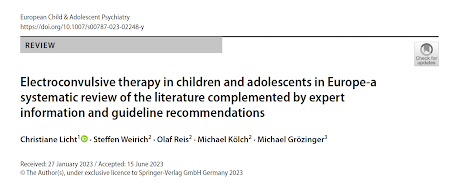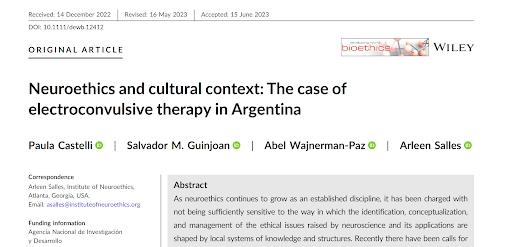Out on PubMed, from international researchers, is this pre-print: Electroconvulsive therapy-induced volumetric brain changes converge on a common causal circuit in depression. Deng ZD, Ousdal OT, Oltedal L, Angulo B, Baradits M, Spitzberg A, Kessler U, Sartorius A, Dols A, Narr K, Espinoza R, Waarde JV, Tendolkar I, van Eijndhoven P, van Wingen G, Takamiya A, Kishimoto T, Jorgensen M, Jorgensen A, Paulson O, Yrondi A, Peran P, Soriano-Mas C, Cardoner N, Cano M, van Diermen L, Schrijvers D, Belge JB, Emsell L, Bouckaert F, Vandenbulcke M, Kiebs M, Hurlemann R, Mulders P, Redlich R, Dannlowski U, Kavakbasi E, Kritzer M, Ellard K, Camprodon J, Petrides G, Maholtra A, Abbott C, Argyelan M. Res Sq. 2023 Jun 1:rs.3.rs-2925196. doi: 10.21203/rs.3.rs-2925196/v1. Preprint. PMID: 37398308 The abstract is copied below: Neurostimulation is a mainstream treatment option for major depression. Neuromodulation techniques apply repetitive magnetic or electrical stimulation to some neural target but si




